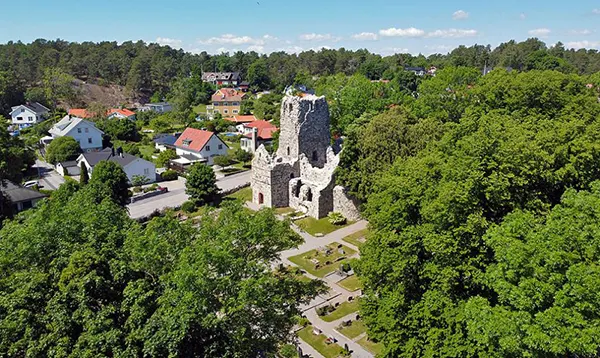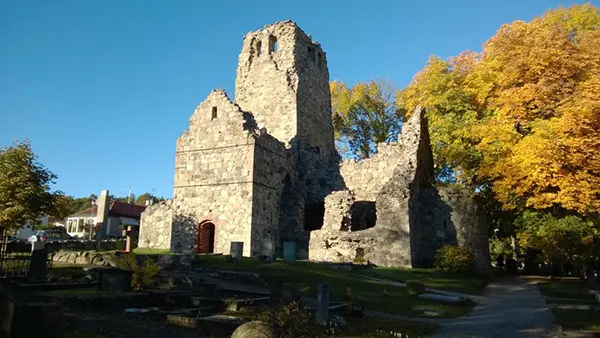
Scandinavia Beyond Capitals: What to See in Sigtuna, Sweden’s Oldest Town
Sigtuna may not boast the fame of Stockholm or the scale of Gothenburg, but its centuries-old charm and rich historical background make it one of Sweden’s most authentic destinations. Founded in 980 AD, this small lakeside town reflects the essence of Scandinavian heritage, offering an escape into a quieter, more atmospheric Sweden. Visiting Sigtuna means walking through a living museum, where every street and stone speaks of the country’s origins.
Strolling Through Sigtuna’s Medieval Streets
The heart of Sigtuna lies in its medieval main street – Stora Gatan – considered the oldest preserved street in Sweden. It’s lined with quaint wooden houses, artisan shops, and traditional cafés, creating a calm and historically immersive experience. Despite its modest size, the town centre is a vibrant hub for both history lovers and casual wanderers.
Walking down Stora Gatan, one is immediately struck by the architecture – low wooden buildings painted in traditional Swedish reds and yellows, many of them dating back to the 18th century. These houses now host bookshops, local boutiques, and bakeries that offer a glimpse into everyday Swedish life, far from tourist clichés.
It’s worth noting that Sigtuna’s layout has remained largely unchanged for over a thousand years. Unlike cities that continuously evolve, here history has been preserved rather than replaced. This makes Sigtuna an excellent location for those seeking an unspoiled connection to Sweden’s past.
Runestones and the Town’s Viking Legacy
Scattered around Sigtuna are more than a dozen runestones – ancient Viking-age carvings bearing inscriptions in runic script. These stones are often built into walls or positioned along roadsides and are easy to miss without paying close attention. Most date back to the 11th century and honour local chieftains or commemorate family members.
What’s especially fascinating is that these runestones mark the intersection of pagan Viking traditions and the Christian influence that started to spread in Sweden during that era. Many inscriptions are among the earliest Christian references found in the region, offering insight into this period of cultural shift.
The local museum provides translations and context for these stones, helping visitors understand their significance. It’s a key stop for anyone wishing to grasp the deeper historical narrative of the town and its role in the broader Nordic transition to Christianity.
Religious Heritage and Church Ruins
Although Sigtuna is small, it has a remarkable density of historical religious sites. The town once had seven churches during the Middle Ages – an unusually high number for such a small settlement. Today, ruins of three medieval stone churches remain and are freely accessible to the public.
Saint Olaf’s Church, believed to have been built in the 12th century, is one of the most iconic remnants. Its stone walls, partly covered with moss and time-worn carvings, serve as a tangible link to Sweden’s Christian past. Nearby, Saint Per’s and Saint Lars’s church ruins also offer hauntingly beautiful locations for reflection and photography.
In the town centre, the Sigtuna Church (Mariakyrkan), dating back to the 13th century, is still active and one of the best-preserved examples of early brick Gothic architecture in Sweden. The church’s tranquil interior and original frescoes provide a powerful connection to the community’s spiritual life across the centuries.
Mariakyrkan and Monastic Life
Mariakyrkan was originally built by Dominican monks and represents the only monastic structure in the region that still serves its original function. Over 750 years later, the building continues to host services, weddings, and concerts, demonstrating its resilience and relevance.
The monastery once connected to the church played an essential role in education and literacy in medieval Sweden. The monks were known to maintain manuscript libraries, teach Latin, and participate in theological debates that influenced the country’s religious development.
Visitors to the church can attend guided tours or simply explore its peaceful garden, which includes medieval gravestones and seasonal blooms that lend serenity to the surroundings. It’s a meaningful location to consider how faith and learning shaped Sigtuna’s early development.

Lake Mälaren and Natural Beauty
Sigtuna’s setting along Lake Mälaren adds another layer of allure. The lakeside promenade offers scenic walking routes that reveal breathtaking views throughout the year. Whether it’s the autumn mist, winter frost, or spring blossoms, each season transforms the shoreline into a picture-perfect scene.
Boats docked by the pier, swans gliding along the water, and the silhouette of church ruins in the distance create a harmonious blend of nature and history. It’s an ideal spot for travellers who prefer a quieter pace and a chance to reconnect with nature without leaving civilisation behind.
Lake Mälaren also offers opportunities for small boat trips, with regular summer routes connecting Sigtuna to Stockholm and Uppsala. This opens the possibility for a tranquil journey through Sweden’s inland waterways, offering a perspective often missed by road travellers.
Exploring by Foot and Water
One of the best ways to experience Sigtuna is on foot. A walk along the lakefront path connects visitors to the local harbour, the old town, and even several church ruins in a single loop. The area is well-maintained, with benches and information plaques to enhance the experience.
For those interested in water travel, small passenger boats run during the warmer months, often combining sightseeing with light refreshments. This offers a unique way to see the town and understand its geography in the broader context of the Mälaren basin.
Additionally, the nearby Skokloster Castle – reachable by boat or car – complements a Sigtuna visit perfectly. This 17th-century baroque palace contains well-preserved interiors, weapon collections, and a library that reflects the aristocratic culture of the Swedish Empire’s golden age.
Popular articles
-
Outer Islands Seychelles: The Un...
The northern segment of the Outer …

-
Ohrid, North Macedonia — A Timel...
Ohrid is one of the oldest …

-
The biggest and most famous casinos
In recent times, fans of the …

